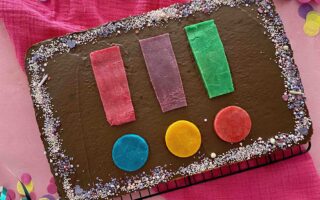Your Questions, My Answers! Today I’m answering the most frequently asked questions about baking and sharing my best baking tips and experiences with you!
I often get asked about tips & tricks for baking – especially baking with kids. So it’s about time I gathered my tried-and-true hacks into a Q&A format for you.
Of course, I’m happy to share my experiences and baking tips with you. At the same time, I want to emphasize that while I’ve been baking for many years and have learned a lot through trial and error, this is no substitute for professional pastry training. Just saying! 😉
To make it easy to follow, I’ve sorted the questions by topic.
If your question isn’t included, feel free to drop it in the comments – I’ll be happy to answer it as soon as possible.
Let’s bake this!
Baking Tips for Sponge Cakes
How do I quickly bring fridge-cold butter/margarine to room temperature?
You can either place it briefly in the microwave at low wattage or cover it with a pre-warmed bowl (fill with hot water for 5 minutes, empty, dry, and place over the butter). After a few minutes, it should be at room temperature.
Why does my butter-sugar mixture curdle when mixing?
Butter and eggs must be at room temperature. Always add the eggs one at a time to the butter-sugar mix.
If it has already curdled, place the bowl in warm water and mix until smooth again.
How can I keep fruit from sinking to the bottom of my cake?
Dust the fruit (fresh or frozen berries) with flour before folding them into the batter.
How do I keep dough from sticking to the kneading hooks?
Lightly grease the hooks with oil before kneading yeast or shortcrust pastry.
Why and how should I grease a baking pan?
Use butter, margarine, or baking spray – not oil. Then dust with flour or breadcrumbs and tap to distribute evenly. Chill for 5 minutes before filling.
For springform or loaf pans, you can also line with parchment paper.
Silicone pans only need greasing the first time – after that, no more! Read also: Baking with silicone baking molds – 5 tips you need to know
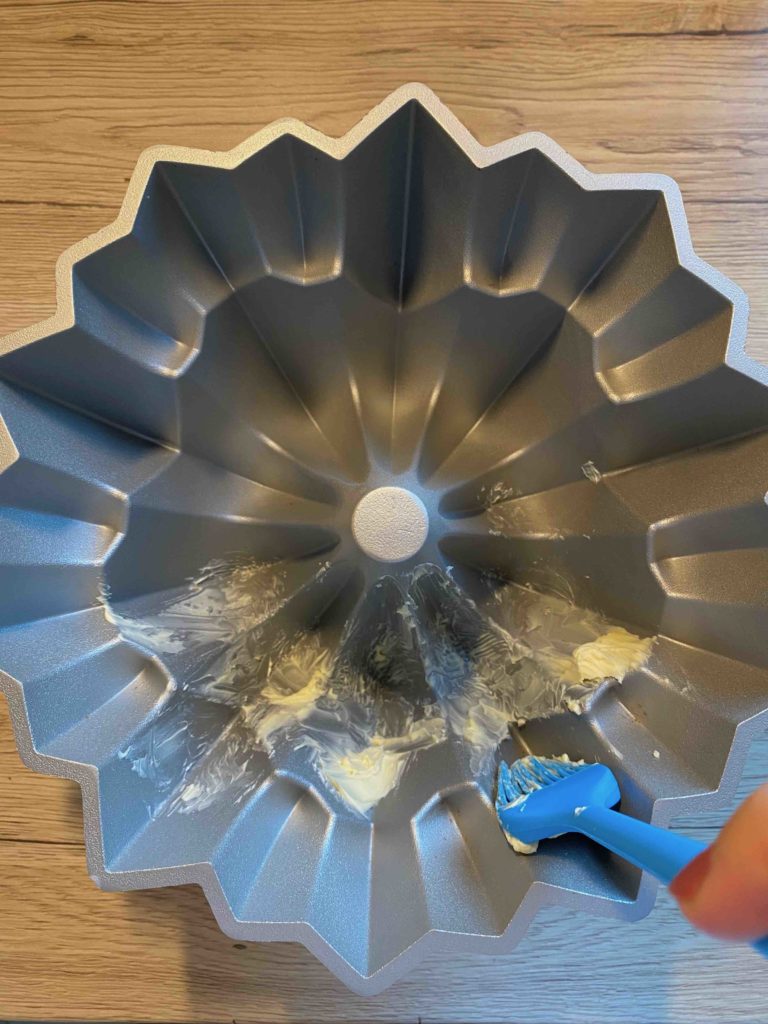
How can I stop cake batter from overflowing the pan?
In my experience, there are two reasons for this: the most common is that the pans are overfilled. The baking pan should not be more than 2/3 full.
Another possible reason could be that you used too much leavening agent (e.g., baking powder). Sometimes, the cake rises very quickly during baking, overbaking the sides of the pan, and then collapses again. In this case, the cake often bakes quickly and becomes dark on the outside, while still being raw on the inside. Therefore, it's generally best not to use too much baking powder. For example, 1 teaspoon of baking powder is often sufficient for a loaf pan.
How do I prevent muffin liners from getting greasy?
If the paper muffin cups are wet at the end of baking, this is due to grease that has escaped during baking or moisture that has collected underneath the paper cups. You can avoid this by placing dry rice under the paper cups in the muffin cups before baking. The rice will absorb the moisture during baking. Another option is to use "greaseproof" muffin cups. (See our product test for “greaseproof” muffin cups).
What is the “toothpick test”?
You can use the toothpick test to check whether your sponge cake or muffins are cooked through. To test whether they are cooked through, use a toothpick or wooden skewer and insert it into the center of the batter about 5 minutes before the specified baking time. If you remove the toothpick and no batter sticks to it, your cake is done and can be taken out of the oven. If there is still batter sticking to the toothpick, your baked goods are not yet cooked through and need a little more baking time. In this case, you should repeat the toothpick test every 5 minutes with a clean toothpick until no batter sticks to the toothpick.
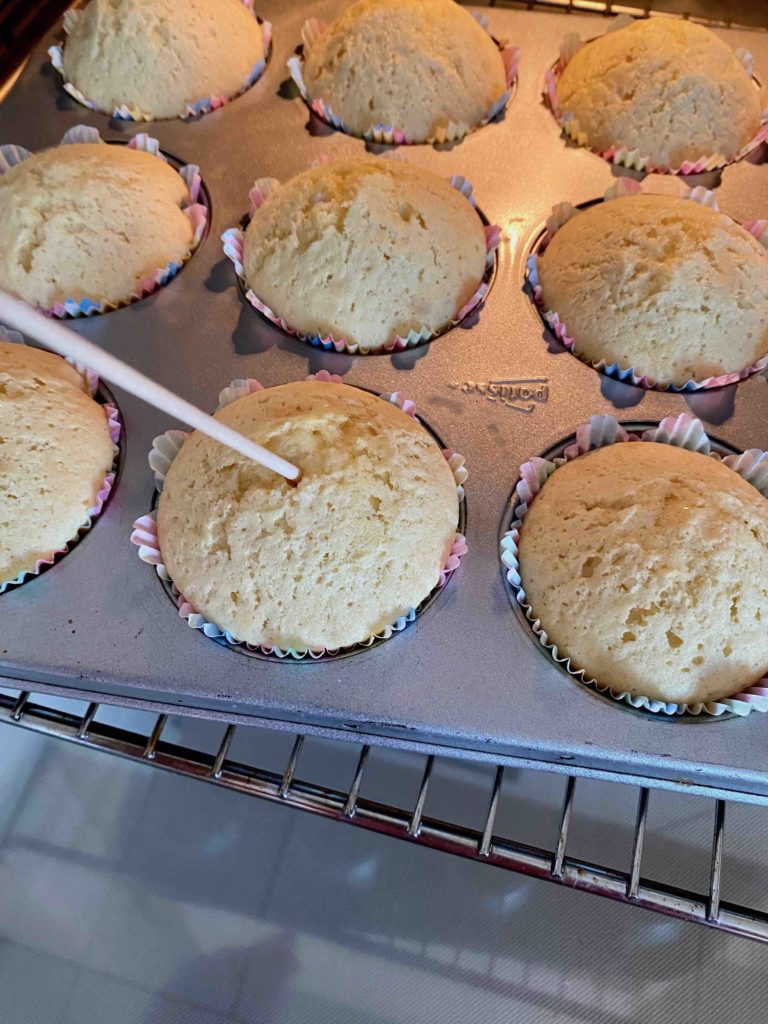
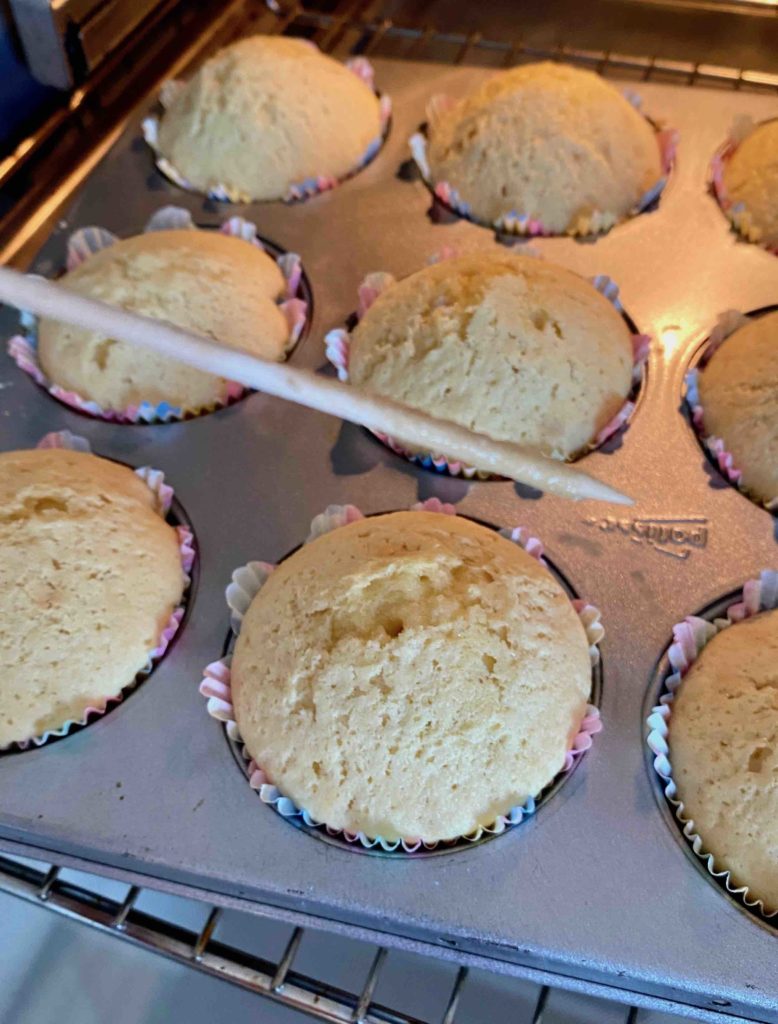
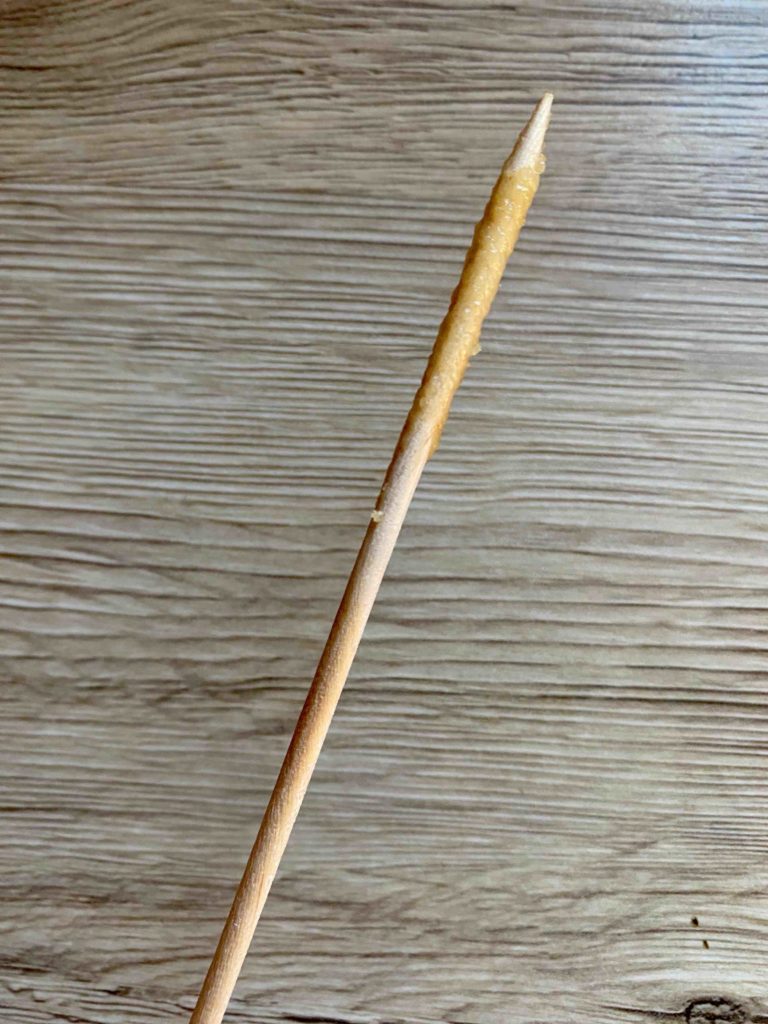
Why does my sponge cake break when removing from a silicone pan?
Baking with silicone baking pans is generally different than baking with traditional baking pans. I generally recommend reading the brief instructions before using the silicone baking pan.
There are several reasons why a sponge cake won't come out of the silicone baking pan. The most common reason is that the sponge cake is still warm. When baking with a silicone baking pan, the sponge cake should be almost completely cooled before removing it from the pan.
Do you already know my blog post “Baking with silicone baking molds – 5 tips you need to know„
How long should a cake cool?
In general, the cake should be completely cooled – ideally in the baking tin for the first 10 minutes and then on a cake rack (be careful! Not valid for silicone baking molds!). Especially before decorating, frosting, or transporting it. If the cake is still warm, it may become wet. This happens because the moisture condenses and settles in the baking pan, between the cake plate and the cake, or in the transport cover.
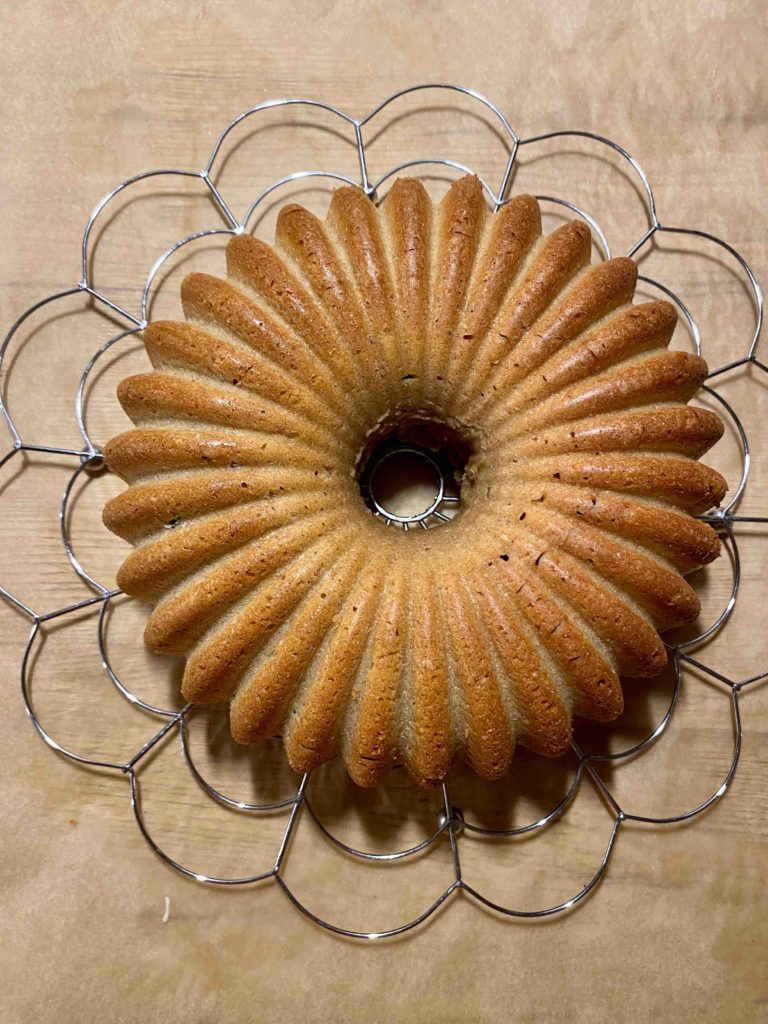
Baking Tips for Decoration
How do I melt chocolate in a water bath?
One of the safest baking tips is to always melt chocolate in a water bath! (In the microwave it can burn very quickly!). To melt chocolate in a water bath, break the chocolate into smaller pieces and place them in a metal or glass bowl. (We like to use a melting bowl that hooks neatly onto the pot.*) Next, fill a pot with a little hot water. The bowl and pot should be sized so that the bowl hangs inside the pot but does not touch the bottom. The bowl must not come into contact with the hot water. The chocolate is not melted in the hot water, but rather in the hot steam. Only the steam should melt the chocolate. While melting, stir the chocolate regularly.
Since chocolate must not come into contact with water (otherwise it will clump), you should NOT cover the pot with the melting bowl. Otherwise, condensation could form on the lid and drip into the melted chocolate.
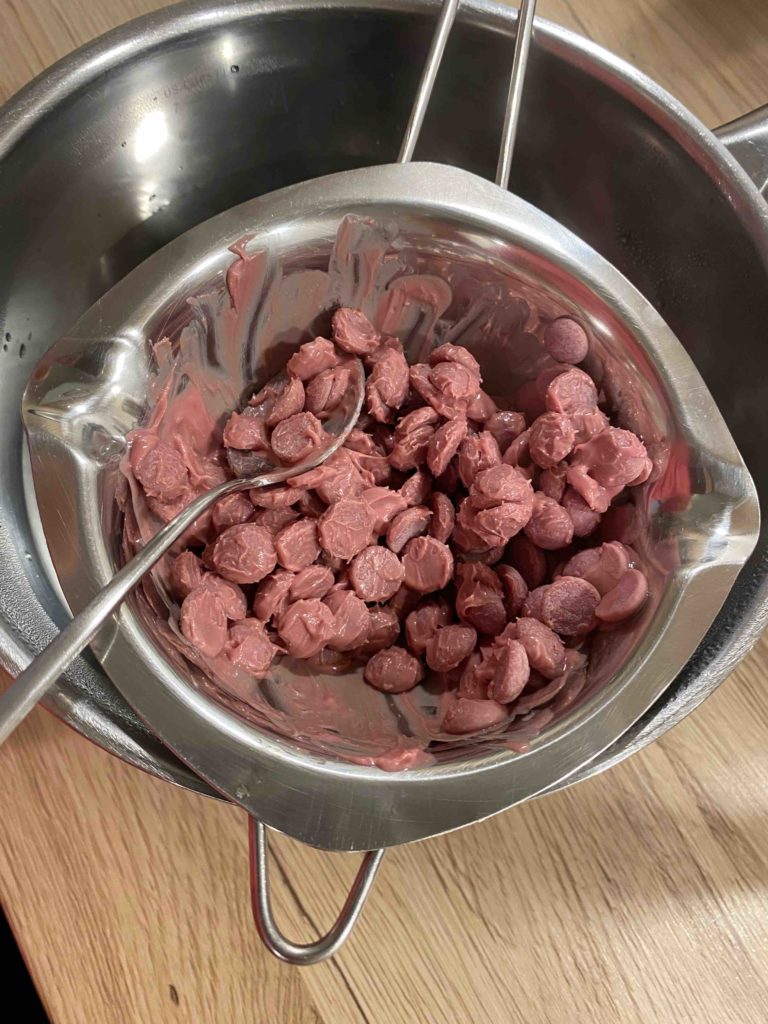
No piping bag – what can I do?
No piping bag? I have two baking tips for you: either use a freezer bag and cut a small hole in one corner, or you roll a piping bag out of a sheet of baking paper.
How do I make icing bright white?
You can achieve a bright white icing by using milk instead of water or lemon juice.
My chocolate glaze is too hard – how do I make it softer?
To prevent your chocolate coating from becoming too hard, you can stir some natural yogurt, whipped cream, or a teaspoon of neutral oil into the melted chocolate coating.
Baking tips about eggs
Eggs have expired. Can I still use them?
Has the best-before date already passed? That doesn't mean you can no longer use the eggs. Here's how to test their shelf life: Fill a glass with water and slowly lower the egg into the water-filled glass. If it sinks to the bottom of the glass, the egg is still fresh. If it floats to the surface, gases have formed inside the egg and you shouldn't use it anymore.
Why won’t my egg whites stiffen?
Two main reasons for egg whites not setting are grease residue in the bowl or on the beaters, or egg yolk residue in the egg whites. It's important that the bowl and beaters are free of grease, that the egg whites have been properly separated from the yolks, and that you're only beating the egg whites. Furthermore, I always recommend adding a pinch of salt to the egg whites.
How do I know when egg whites are stiff?
Either cut into the mixture with a knife – if the cut stays visible, they’re ready. Or (the brave test): turn the bowl upside down. If it stays, it’s stiff enough.
How do I separate eggs cleanly?
Use a plastic bottle to separate egg yolk from egg white: squeeze an empty plastic bottle , place the opening over the yolk, release, and it will suck up the yolk. The vacuum ensures that only the yolk is sucked into the bottle. By pressing on the bottle again, you can pour the yolk into a separate bowl. Bam, the egg is separated.
How do I quickly bring cold eggs to room temperature?
For many recipes, it's important that eggs are at room temperature to prevent them from curdling or curdling the batter. If you forgot to take the eggs out of the fridge in time before baking, you can simply place them in a bowl of lukewarm water for a few minutes to warm them to room temperature.
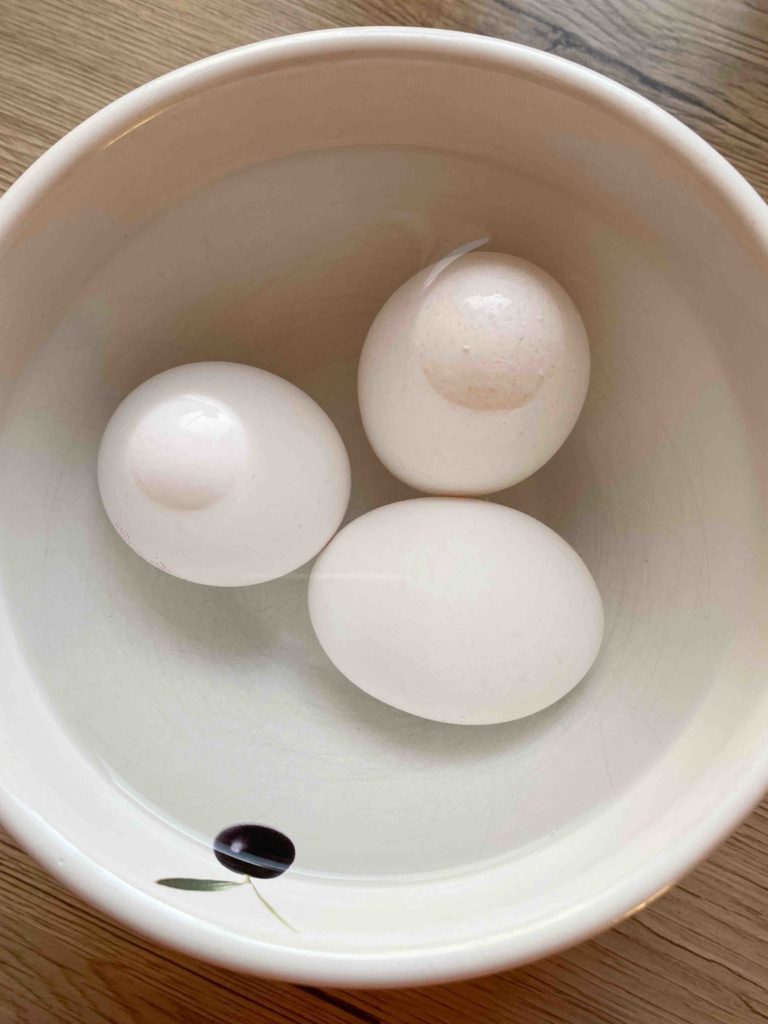
Baking tips for baking with kids
My cookie dough becomes dry and crumbly after rolling it out several times. How can I prevent this?
Shortcrust pastry or cookie dough usually turns out dry and crumbly because too much flour is used when rolling out the dough. The flour dries out the dough. Therefore, one of my most frequently used baking tips is: don't roll your dough on a floured surface, but rather between two sheets of baking paper.
After decorating with children, the sprinkles are no longer usable. How can I change this?
One of my favorite baking tips for baking with kids: Fill the sprinkles you'll be using into silicone muffin cups or paper muffin cups. This is helpful for three reasons: 1. The little ones can reach the sprinkles more easily with their little fingers. 2. If chocolate or something similar gets into the sprinkle mix, only the filled portion is unusable. 3. If the filled sprinkles are still in good condition and can still be used, you can easily return them to the sprinkle container.
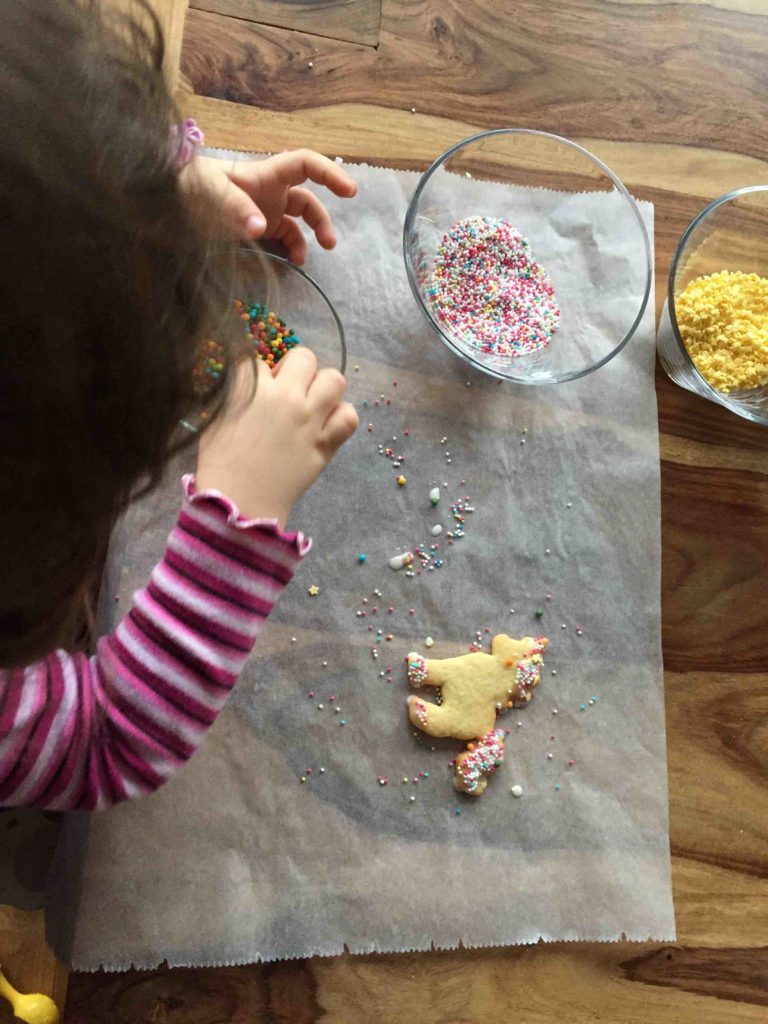
How can I avoid eggshells in the batter when baking with kids?
Easy! Instead of cracking the eggs over the batter, have your child crack them into a small bowl. If any eggshells end up in the bowl, you can easily scoop them out of the egg mixture with a teaspoon. Then add the egg from the extra bowl to the batter.
How do I make all muffins the same size?
You can achieve an even size of muffins by dividing the batter evenly into the muffin cups, for example using an ice cream scoop.

How do I prevent the baking paper from slipping off the baking tray?
There is a very simple baking tip: If you moisten the baking tray slightly and then place the baking paper on the moistened baking tray, it will not slip and will “stick” to the baking tray due to the moisture.
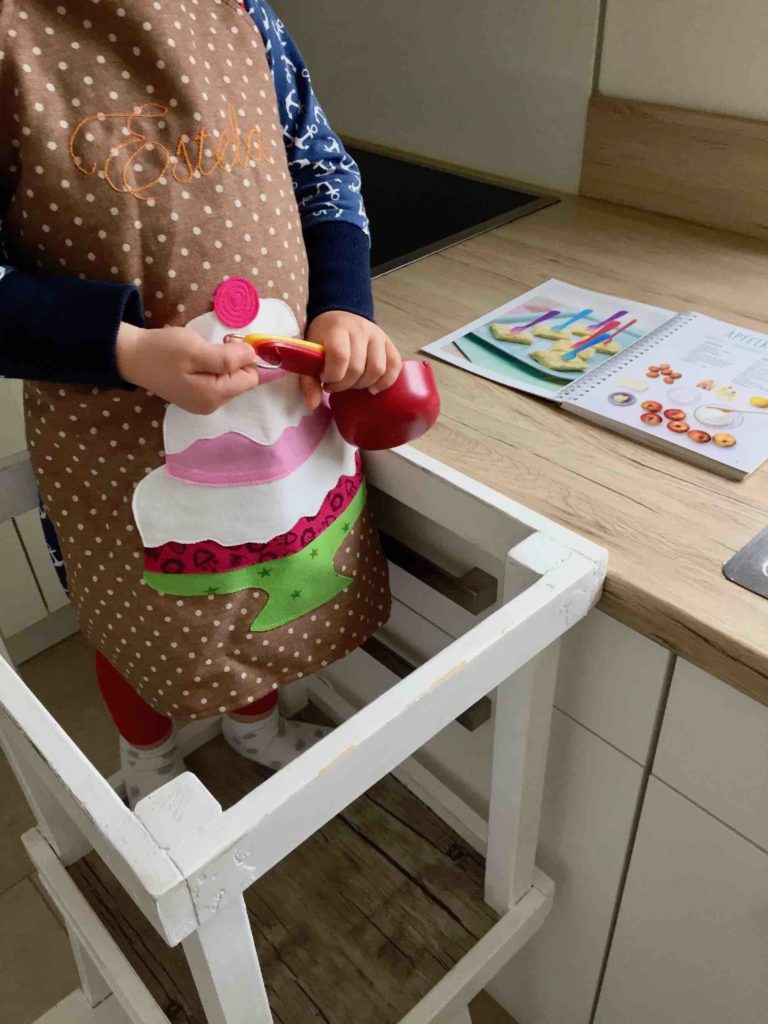
BAKING NEWS – The most delicious thing right in your inbox?
Sign up for our newsletter and be the first to hear about colorful recipe ideas, easy baking hacks and upcoming baking promotions!

